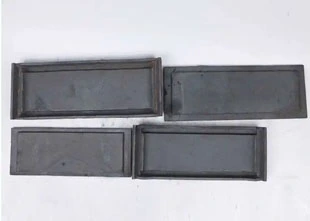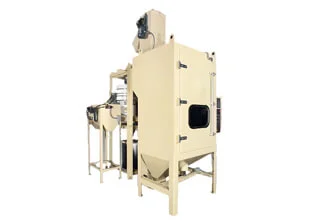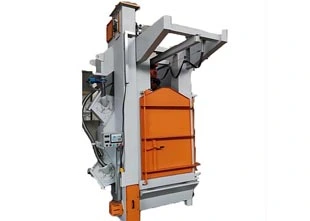Many people often confuse sandblasting with shot blasting, assuming they are the same. However, these terms describe distinct processes within the abrasive blasting industry.
The primary difference between sandblasting and shot blasting, also known as grit blasting, lies in the techniques used to apply abrasive materials for cleaning, restoring, and preparing products for finishing. Sandblasting uses compressed air to propel abrasive media, such as sand, against the product. In contrast, shot blasting employs centrifugal force generated by a mechanical device to project the abrasive material.
Interestingly, the term “sandblasting” is now somewhat outdated. The industry rarely uses sand due to its challenging properties and associated health risks. Modern abrasive materials, which are safer and more effective, include minerals, metals, glass, plastics, and organic substances like corn cobs and walnut shells.
WHY IS SAND RARELY USED IN ABRASIVE BLASTING?
Sandblasting was once the standard in abrasive treatment due to the availability of sand. However, sand's moisture content and contaminants made it difficult to use effectively. More importantly, sand poses significant health risks. Silica, a component of sand, can cause severe respiratory illnesses, including silicosis and lung cancer, when inhaled.
The United States Occupational Safety and Health Administration (OSHA) has implemented stringent regulations to minimize silica exposure, making the use of sand in abrasive blasting less common. OSHA's fact sheet on Protecting Workers from the Hazards of Abrasive Blasting Materials provides further details on these regulations.
Modern abrasive materials offer superior performance and safety compared to sand. While sandblasting relies solely on compressed air methods, shot blasting's centrifugal/mechanical approach is more versatile. The choice between these methods depends on various factors, including the surface being treated and the desired finish.
WHAT IS SANDBLASTING?
Sandblasting involves using compressed air to propel abrasive media at high pressure toward a surface. This technique is commonly used to clean and prepare surfaces, such as auto parts, rusty chains, or old filing cabinets, for finishing. Over the years, sandblasting equipment has evolved to include sophisticated enclosures that control the abrasive stream and reduce dust.
Despite advancements in equipment and materials, sandblasting remains a popular and economical method for treating soft and sensitive surfaces. It is easy to operate and provides excellent quality results.
WHAT IS SHOT BLASTING?
Shot blasting uses centrifugal or mechanical force to propel abrasive media. This method involves a spinning wheel that accelerates the media and blasts it against a surface. Shot blasting is more aggressive than sandblasting and is typically used for larger, more challenging preparation tasks.
Shot blasting is commonly employed in large-scale operations, such as restoring automobile frames or recycling steel containers. It is also used for peening engine components to increase their malleability.
WHICH IS BETTER: SANDBLASTING OR SHOT BLASTING?
There is no definitive answer to whether sandblasting or shot blasting is better. The choice depends on the surface being treated and the desired finish. Sandblasting is less invasive and more forgiving, making it suitable for delicate surfaces. Shot blasting, on the other hand, is ideal for deep abrasive penetration on denser materials.
EQUIPMENT USED IN SANDBLASTING
Sandblasting equipment uses high-pressure compressed air to propel abrasive media. Typical equipment includes:
Air blast rooms
Air blast tumble equipment
Portable blasting stations
Blast cabinets
Bulk blasting systems
Blast and recovery systems
Cryogenic deflashing systems
Wet blast equipment
EQUIPMENT USED IN SHOT BLASTING
Shot blasting equipment uses wheel blast systems to propel abrasive media. Common types include:
Tumble blast equipment
Swing table blast wheels
Table blasters
Spinner hangers
Hanger blast equipment
Cylinder blasters
CHOOSING SANDBLASTING AND SHOT BLASTING ABRASIVE MEDIA
Both sandblasting and shot blasting systems rely on abrasive media, which can be mineral, organic, ceramic, plastic, or metal-based. The media's shape, size, hardness, and density are critical factors in determining the final surface finish.
SANDBLASTING AND SHOT BLASTING ABRASIVE MEDIA MATERIALS
Common abrasive media materials include:
Steel shot and grit
Glass beads
Black Beauty (coal slag)
Aluminum oxide
Silicon carbide
Staurolite
Plastics
Walnut shells
Corn cobs
Sand
Each material has unique properties suited for specific applications.
The choice between sandblasting and shot blasting depends on the specific project requirements. Professional advice is recommended to determine the best system and media for the job.
 English
English


